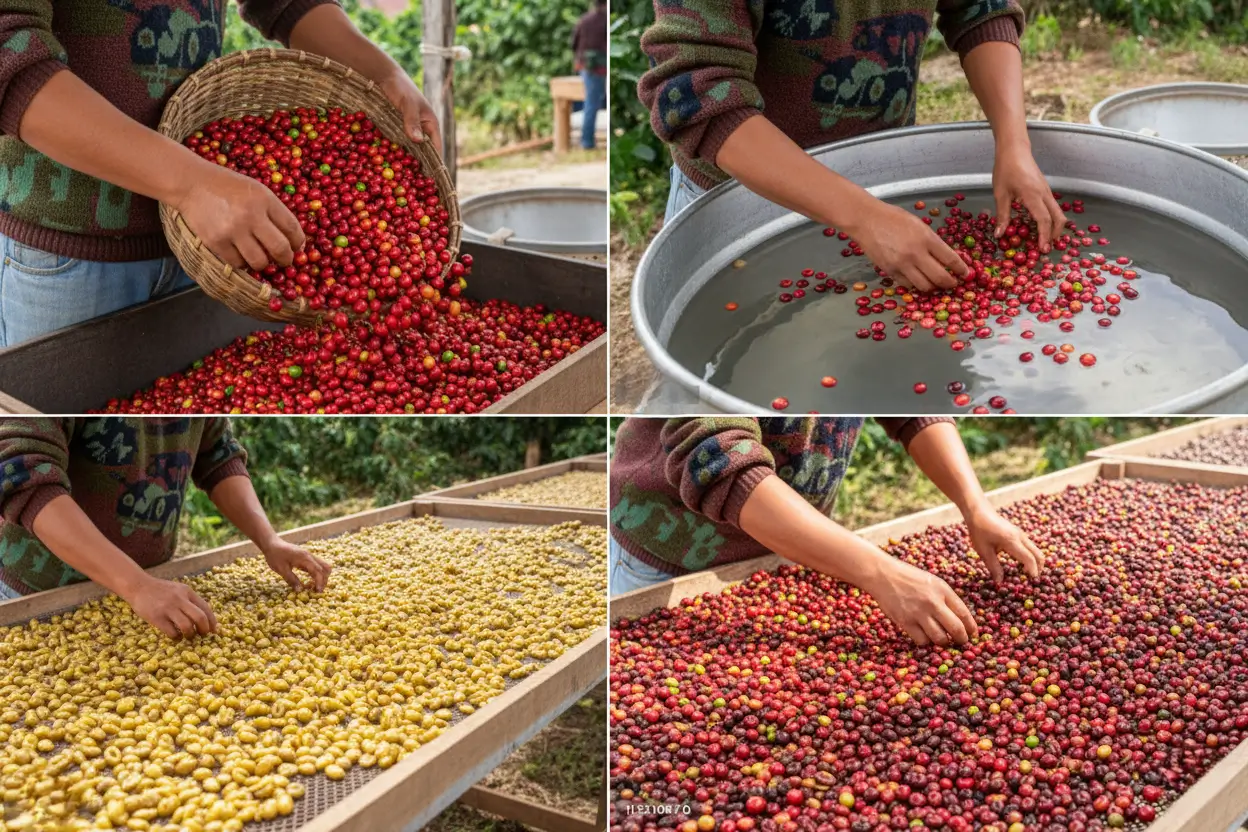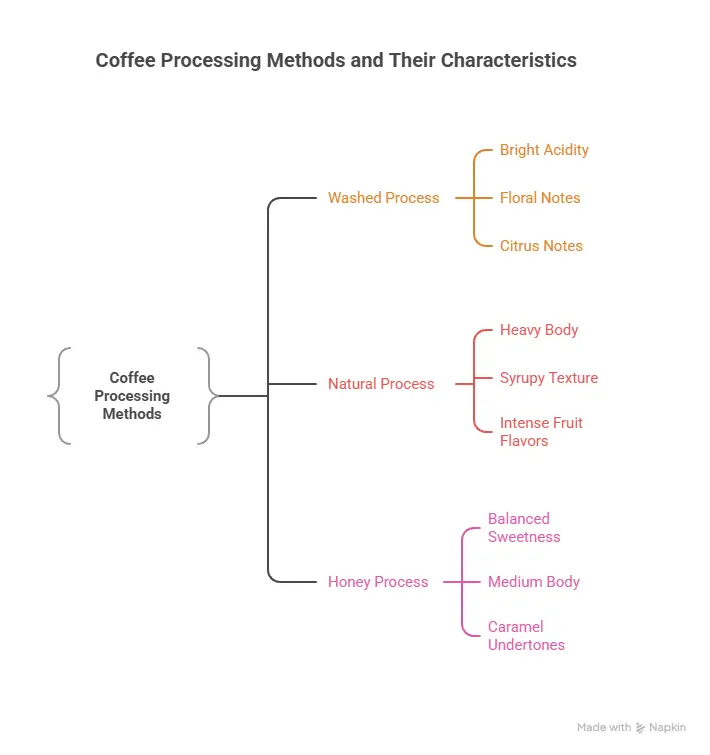Blog
Coffee Production: What Are the Three Coffee Processing Methods?

The three main coffee processing methods are washed (wet) process, natural (dry) process, and honey (semi-washed) process. Each method dramatically impacts the final flavor, aroma, and quality of your single-origin coffee by determining how the coffee beans are extracted from the cherry fruit.
Understanding these processing methods helps explain why coffees from different regions taste so distinct, even when grown under similar conditions.
What Is Coffee Processing?
Coffee processing is the method used to remove the coffee bean from inside the cherry fruit. Each cherry contains two coffee beans surrounded by layers of fruit flesh, mucilage, and parchment.
The processing method determines how these layers are removed and affects the bean’s final flavor profile. This is why single origin coffee from the same region can taste dramatically different depending on the processing technique used.
The Three Main Coffee Processing Methods

1. Washed (Wet) Process
The washed process begins with hand-picking ripe cherries, followed by mechanical removal of the outer skin and fruit flesh. Beans then ferment in water tanks to break down the sticky mucilage, after which they’re thoroughly washed and dried. This careful process is what gives medium roast coffees their bright, clean characteristics.
Key Characteristics:
- Bright, clean acidity with floral and citrus notes
- Light to medium body that highlights origin characteristics
- Requires abundant clean water
- Higher processing costs but consistent quality
Best Examples: Ethiopian Yirgacheffe, Kenyan AA, Colombian coffees
2. Natural (Dry) Process
This traditional method involves drying whole cherries in the sun for several weeks. The beans absorb sugars and flavors from the fruit during this extended contact period, creating distinctly different taste profiles. Natural processing often enhances the deep, rich flavors that make dark roast coffees so appealing.
Key Characteristics:
- Heavy, syrupy body with intense fruit flavors
- Lower acidity with enhanced sweetness
- Minimal water usage (most sustainable option)
- Requires careful monitoring to prevent over-fermentation
Best Examples: Ethiopian Sidamo, Brazilian Santos, Yemeni Mocha
3. Honey (Semi-Washed) Process
A hybrid method that removes the cherry skin but leaves the sticky mucilage coating on the beans during drying. This creates a balance between the clean characteristics of washed coffee and the fruit-forward qualities of natural processing.
Key Characteristics:
- Balanced sweetness and acidity with medium body
- Complex flavors with fruit notes and caramel undertones
- Moderate water usage
- Requires precise timing and monitoring
Best Examples: Costa Rican honey process, Salvadoran honey, Brazilian pulped naturals
Other Coffee Processing Methods
While washed, natural, and honey processes dominate global coffee production, there are other specialized methods worth noting.
Wet-Hulling (Giling Basah): This Indonesian method removes the parchment layer while beans are still at high moisture content. It creates the distinctive earthy, herbal flavors with heavy body that Sumatran coffees are known for.
Carbonic Maceration: An experimental technique where whole cherries ferment under CO₂ pressure in sealed tanks. This wine-making inspired method produces bold, wine-like flavors and enhanced fruit complexity, though it’s still limited to specialty producers.
Choosing the Right Processing Method
There’s no “best” method since each produces distinctly different flavor profiles. Your choice depends on personal taste preferences and brewing methods.
Quick Selection Guide:
- Washed – Choose for bright, clean, origin-specific flavors
- Natural – Choose for intense fruit flavors and full body
- Honey – Choose for balanced sweetness with complexity
Why This Matters
Understanding processing methods helps you predict flavor profiles when buying coffee, choose appropriate brewing techniques, and appreciate why certain regions favor specific methods. To learn more about how origin affects flavor, check out our guide on how terroir affects coffee.
Whether you prefer the bright clarity of washed Ethiopian coffee, the berry-forward intensity of Brazilian naturals, or the balanced sweetness of Costa Rican honey process, processing is key to understanding what makes each coffee unique. For a deeper dive into coffee origins, explore our article on single origin vs. blends.



